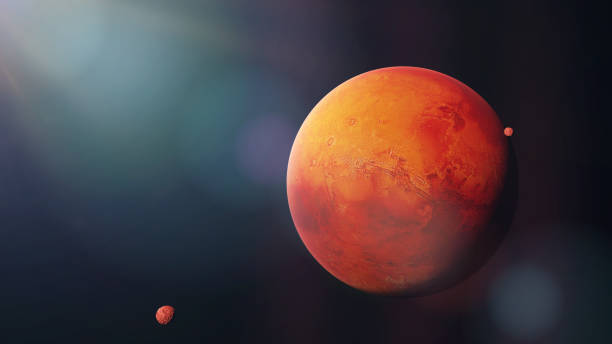
New Delhi, October 22 : Is life on Mars possible? New research suggests that regions of Mars may have conditions that could support photosynthesis. For centuries, humanity has pondered the possibility of life beyond Earth. Despite numerous advancements in technology and space exploration, evidence of extraterrestrial life has remained elusive. However, a new study by NASA offers intriguing clues that bring us closer to solving this age-old mystery.
Recent findings from NASA indicate that Mars’ mid-latitude regions might possess conditions that could enable photosynthesis to occur beneath the planet’s icy surface. The mid-latitudes, located between 30 and 60 degrees latitude in both hemispheres, are thought to harbor significant amounts of water ice beneath layers of rock and dust that can be several meters thick.
Photosynthesis, the process by which plants, algae, and some bacteria convert sunlight, water, and carbon dioxide into oxygen and glucose, is crucial for life on Earth. The study suggests that Martian ice, while acting as a protective barrier against the Sun’s intense radiation, could still allow enough sunlight to penetrate for photosynthesis to take place. This could create “radiative habitable zones” beneath the surface.
According to Aditya Khuller, the lead author of the study from NASA’s Jet Propulsion Laboratory, the Martian ice exposures in these mid-latitude regions may be some of the most accessible locations for searching for signs of life. “While we are not claiming to have found life on Mars, we believe that these dusty ice exposures represent one of the best places to investigate the possibility,” Khuller told Space.com.
Although Mars and Earth both exist in the “habitable zone” of the Sun, where temperatures allow water to exist in liquid form, the two planets differ vastly. Earth is covered with oceans, whereas Mars is dry today. However, previous NASA missions have found evidence of ancient liquid water on Mars, including dried lake beds and water ice deposits in uncharted areas.
Scientists believe that Mars lost its liquid water billions of years ago after the planet’s magnetic field collapsed, leaving it vulnerable to harmful ultraviolet radiation. Mars currently receives 30% more UV radiation than Earth, as it lacks the protective ozone layer that shields Earth from the Sun’s rays.
The new research, which involved computer simulations, suggests that beneath the dusty ice, liquid water could potentially exist without evaporating. Khuller noted that this combination of sunlight and liquid water could create the right conditions for photosynthesis under the ice.
While this study does not confirm the existence of life on Mars, it opens up new avenues for exploration and fuels the ongoing search for extraterrestrial life.





